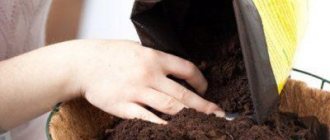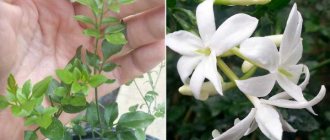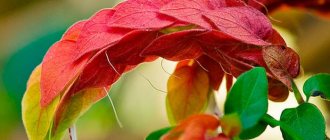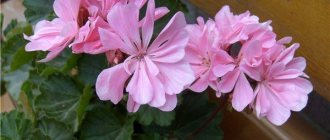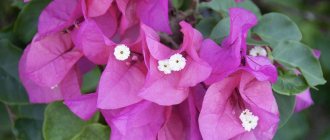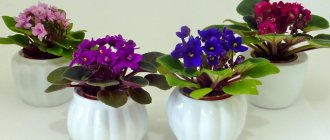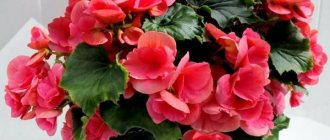Hoya is an exquisite evergreen tropical plant, a liana in which the surface of the leaf blade is as if covered with wax. It is perfect for landscaping an apartment and, with its decorative effect, gives the room in which it grows a unique coziness. Housewives often call Hoya simply - wax ivy. Caring for Hoya at home is quite simple, because wax ivy is considered a very unpretentious plant. She is not capricious and is grateful for the slightest care from her owner.
Story
Hoya received its name from the then famous botanist Robert Brown, the author of the theory of “Brownian motion”. In 1810, he described just this type of hanging vines and gave them the name of his friend Thomas Hoy, the gardener of the English Duke of Northumberland. Thomas worked for many years in the Duke's greenhouse and devoted his entire life to growing tropical plants.
Hoya belongs to the Lastovnevye subfamily in the Kutrovye family. In total there are over 200 varieties of Wax Ivy. Most often, the flower can be found in the forests of Asia, on the west coast of Australia, and in southern China. It grows in Madagascar and the Canary Islands. In tropical areas, it lives in open forests, where it spreads along rocky slopes and clings to sparse trees. Reaches a length of ten meters.
Landing rules
The most important condition for the full growth and development, and subsequently flowering, of hoya is a properly selected substrate. This plant is an epiphyte, that is, it cannot be planted in the ground. You need a special nutrient mixture of pieces of wood, peat, coconut fiber and leaf soil. Some people manage to grow a flower in ordinary expanded clay, watering it with special fertilizers.
The substrate should have good air permeability, be loose and light. Hoya and orchid mixture are suitable, but you will still need to add a little leaf humus to it. Polystyrene foam is required for drainage - it is mixed directly with pieces of wood and soil. In such a substrate, the plant will produce buds already in the second year from planting in good light.
The flowerpot with epiphytes should be placed on sunny windows - eastern, south-eastern, southern. On a north window, hoya will not die, but it will never bloom. The best option is to hang a pot with a vine over the windowsill and just let the vines hang freely down. When tying them to supports, problems may arise - breaks, tangles and thickening of the stems, which makes flowering difficult.
Description
Hoya is a beautifully flowering evergreen vine. At home it grows to a maximum height of 5 – 6 meters. Young leafless shoots of the vine are brown with shades of purple. As they grow older, when young leaves and aerial roots begin to appear on them, the shoots turn green, and then, over time, become woody. The leaves of the vine are leathery, with moderately pronounced fleshiness, as if covered with wax, with small inclusions of gray color. Different species of Hoya have leaves of different sizes and are colored in different shades of green. The leaves, shiny at a young age, gradually become dull. They are ovoid, oval or heart-shaped and have fleshy, leathery axillary inflorescences. Hoya flowers are collected in umbrellas. Sometimes up to 50 flowers are collected in one umbrella. The flowers have different shapes, but all have five rounded petals. The diameter of each flower is 1–2 cm, except for the flowers of Hoya imperatoria, which reach 8 cm in diameter. In the center of the corolla of the flower there is a five-membered crown rising above the petals. The flowers are velvety in appearance, white, brown or greenish in color. Each bud blooms and stays in the inflorescence for about three weeks, after which a new flower appears in its place. Hoya blooms at the end of May and blooms all summer and half of autumn. During flowering, a huge amount of nectar is released - Wax Ivy is a honey plant. At the peak of flowering, its aroma can drive any gardener crazy!
This is a completely harmless flower. It is not part of the poison ivy family. The plant does not suppress the growth of other flowers in the apartment. Many psychics claim that this beauty, with her energy, reduces aggression and rivalry between everyone who neighbors him. Therefore, wax ivy can be found in almost all office buildings to create a calm working atmosphere. Very rarely, the fragrant smell of a flowering plant causes a headache. Allergy sufferers also need to be careful when contacting Hoya flowers so that they do not cause dermatitis on the skin. But in general, you will get a lot of pleasure and a cozy atmosphere in your home from growing Hoya!
Pros and cons of Hoya
Decorative effect of shoots and inflorescences
Possibility to grow as a hanging plant or give the desired shape using a support
Long flowering and pleasant aroma of flowers
Do not move the bush during the formation of buds to avoid their falling off
The aroma of flowers is sometimes too intense, causing headaches
In winter, the plant needs to be kept at fairly low temperatures for abundant flowering later.
Types and varieties of Hoya
In indoor floriculture, Hoya is grown in different ways:
- as an ampelous plant in a flowerpot;
- like ivy around a support;
- like a bush with an erect stem.
To do this, select the appropriate type of Hoya.
Hoya majestic
The homeland of Hoya Majestic or Imperial (Hoya imperialis) is the Malacca Peninsula. Grows as a climbing shrub. The leaves are oval-shaped, oblong, with a slightly pointed tip. They are large, up to 20 cm in length. The surface of the leaves is smooth and leathery. The flowers are collected in hanging umbrellas of 6 - 10 pieces. They are dark red inside and yellowish green outside. Their petals look like stars and smell pleasant.
Hoya Beautiful
Hoya Bella is an ampelous type of plant. Brought from India, perfectly adapted to high room temperatures and humidity. It has the appearance of a small shrub with creeping shoots, which are covered with small, thick, pointed leaves up to 2.5 cm in length. It blooms with medium-sized white flowers, the crown of which is a unique red or red-violet color. Blooms profusely throughout the summer. The aroma of this type of Hoya is less pronounced than others, so the flower can be placed almost anywhere in the apartment.
Hoya Greenflower
Hoya Chlorantha is a very showy plant with elongated leaves and velvety flowers of white, brown or greenish color.
Hoya Fleshy
Hoya Carnosa is a very popular vine among gardeners. It grows naturally in India, China, Vietnam, Malaysia, and Japan. Reaches a length of 6 meters. It is necessary to tie it up or install a ring support so that the thin stems of the plant wrap around it. This type of vine has different flowers depending on its variety. Thus, the variety Variegata has flowers of a pinkish tint with a white edge, and Tricolor has leaves that have a green edge, and the middle is first colored red, and changes to yellow as it grows. Hoya Exotica has leaves with a yellow center and green edges. The Crimson Queen variety has bright pink flowers with a pale pink edge.
Hoya Motoskei
Hoya Motoskei is a long, up to 6 meters, vine with drooping creeping stems. Its dark green leaves are oblong or heart-shaped. They are fleshy and shiny in appearance. The leaf length reaches 8 cm, and the width is up to 4 cm. The flowers of the vine are pale beige or white, with a pink crown in the center. They are collected in umbrellas and have a very pleasant aroma.
Hoya Multiflora
Hoya Multiflora was brought to us from Malaysia. It grows in the form of ivy with linear oblong leaves. It blooms early with long orange flowers with narrow yellow petals in the shape of a star with a tip-shaped center. It most often has large leaves, although there are species with small leaves.
Hoya Kerry
Hoya Kerri is another ivy-like species. This variety of Wax Ivy was discovered in 1911 by the American scientist A. Kerry in northern Thailand. This vine was named in his honor. Very beautiful view. Long stems need staking. The pubescent flowers are collected in spherical umbrellas of 15 - 25 pieces. Their color depends on the plant’s exposure to sunlight: from white with a barely noticeable lemon tint to yellow-lemon and pinkish. The older the plant, the darker its flowers become. It is distinguished by an unusual leaf shape - in the shape of a heart. This flower is called Valentine or Hoya of lovers. In order to grow this amazing plant, it is enough to plant one heart in the ground - very soon it will take root.
Hoya Concave
Hoya Lacunosa lives in Malaysia. It has small diamond-shaped leaves, light green in color with a darker edge. Flowers have a subtle, pleasant aroma, similar to perfume. This type of vine is considered the most unpretentious to care for and is very popular among novice gardeners.
Hoya Cupulata
Hoya Cupped (Hoya Calycina) is an upright plant species. Its difference is in the leaf plates - they are the longest, up to 20 cm in length.
This may be interesting: Crassula (Money tree or Crassula) - types, photos and names
Hoya blooming
The formation of buds and the duration of flowering depend on the light level of the plant. The more light that hits the hoya, the better and longer it blooms. In addition, the setting of buds is affected by the wintering of the plant. During this period, wax ivy is placed in a well-lit room with an air temperature of 10 to 15 ° C, significantly reducing the frequency of watering.
It is not advisable to move a bush with buds from one place to another or turn the pot with the other side towards the light source, as this is fraught with loss of flowers.
It is recommended to support shoots with peduncles so that they are not suspended, but lie freely on their surface.
At the end of flowering, pruning of too long lashes is carried out. The inflorescences on the remaining stems are not removed - new buds will form on them next year.
Guseva Ulyana
Ask a Question
Question to the expert
Are there ways to speed up the appearance of flowers on hoya?
If there is no flowering for a long time, the bush is subjected to a special procedure - a warm bath is given. To do this, the plant is completely immersed for several minutes in water heated to 30 °, and then the leaves are sprayed with warm and settled water for several days.
Caring for Hoya at home
For home cultivation, Hoya is usually purchased in two types: Beautiful or Fleshy. In order for Hoya to grow well in your apartment, you need to create conditions for it that are close to its usual tropical conditions. Here are the basic rules for caring for a flower.
Flower content temperature
Hoya feels great at a normal room temperature of 20 - 30 °C. Loves fresh air - ventilate the room. But it is not at all necessary to take it outside. Moreover, you should not expose her to cold drafts. Wipe off dust from the leaves and spray them regularly. In winter, the flower will withstand temperatures dropping to 15 °C. But the temperature is below 10 °C. The Hoyas may not survive. Winter flower maintenance at 16 – 18 °C. necessary for regular annual summer flowering of Hoya. This period of Hoya’s life is considered conditionally a period of rest.
Yellowing and falling leaves are often a sign of flower hypothermia!
Location and lighting
If the plant does not like its location, it may not bloom. Let's consider all the options in order.
Hoya is not afraid of a little shade. If you place it near eastern or western windows, it will not only grow well, but also bloom profusely all summer and until mid-autumn. It must be protected from direct sun. As one option, you can place the vine against the wall in the southern room. Like an hanging plant, it will cover the entire wall and become the highlight of your home.
But, one should take into account the fact that Hoya does not like to be moved from place to place. If you move it from place to place or hang it on other walls, then it will simply lose all the buds and even shed all the leaves. This plant is completely unsuitable for summer landscaping on balconies, loggias or verandas.
You should not place the pot on the windowsill - it will not tolerate direct sunlight, and it will not like the proximity of heating devices in the autumn-winter time - Hoya may get sick and die.
The daylight hours should be long enough. If cloudy days occur during flowering, it is advisable to improve its lighting using a fluorescent lamp or phyto lamp so that daylight lasts at least 12 - 14 hours a day. The same applies to the winter period of her life, only 10 hours of lighting per day will be enough.
When choosing a place for a flower, you must remember that during flowering Hoya emits such a strong aroma, especially at night, that you will definitely want to take it out, for example, from the bedroom (which can lead to the shedding of not only flowers, but also leaves), or you will have to constantly ventilate the room.
And one more important condition. For trouble-free growth and development of the plant, different types of support are needed: posts, trellises, trellises, all kinds of arcs in the shape of a heart, ring or arch. They are simply necessary in order to tie to them numerous flexible and rather long shoots of the plant - vines. Although, it is possible to grow Hoya as a shrub. Then you will have to frequently pinch out the growing shoots.
Features of Hoya flowering
Tropical liana loves bright but diffused sunlight. Receiving it in abundance, Hoya will bloom profusely and for a long time with beautiful fragrant inflorescences. Choose the location of the flower so as not to move the pot from place to place during the period of bud formation and flowering, since the plant can partially shed both buds and flowers. Stems with clusters of flowers should be securely supported so that they are always in an upright position. After flowering, long shoots should be cut off, but short and flowering shoots should be left.
Do not touch the flower stalks either - after a while buds will appear on them again.
Watering
From March to October, Hoya should be watered regularly and moderately. About once a week. The water should be soft. If you use chlorinated tap water, it should sit for 24 hours so that all impurities precipitate and the chlorine evaporates. Be sure to remove excess water that has accumulated in the pan so as not to provoke rotting of the root system of the flower. In summer, it is necessary to water the plant after the soil has dried out from the previous watering to about one to two cm from the surface. From November, watering is reduced. The plant is watered a couple or three days after it is noticed that the top layer of soil has become dry. About twice a month. You shouldn’t water Hoya at all in the autumn-winter period - its roots will begin to die, and by spring the plant will become weakened and may die.
Bathing
Twice a year, in the spring before flowering and in the fall after flowering, Hoya is bathed. A pot with a flower is lowered into a large basin with hot water heated to 30 - 40⁰C. After 7 - 10 minutes, the stems of the plant are pulled out of the water, and the earthen lump remains in the hot water for another half an hour.
This may be interesting: Pachypodium - home care
Spring bathing will significantly speed up the approach of flowering and promote rapid growth of ivy. Autumn bathing will harden the flower and give it strength to survive the difficult winter time.
Ambient humidity
For Hoya, air humidity is not a determining factor. It will grow at normal room humidity. If the air in the room is too dry, it is enough to place the flower pot in a tray with wet expanded clay and regularly spray the surrounding air.
Transplant and pot
The liana grows quite quickly. Within a year, its length will reach 30 cm. Its roots also grow. Therefore, we recommend replanting young plants every spring into new pots, 2 - 3 cm larger than the old ones. Keep in mind that in a more spacious pot, Hoya will feel more comfortable, its shoots will grow faster, adding 30 - 50 cm per year. But in a slightly cramped pot it will bloom more profusely. Therefore, you choose what is more important to you in the coming year - either to grow more young shoots, or to make Hoya bloom profusely. Hence the size of the new pot.
An adult plant needs to be replanted less often - once every 3 - 4 years. The optimal pot size for an adult plant is 18 – 20 cm.
Replant by transferring the plant along with the earthen ball into a new pot. Do not forget about drainage - expanded clay or broken shards, laid at the bottom of the flowerpot at a third of its height. If there is a need to completely replace the old soil with a new one, carefully free the Hoya root system from the old soil, remove dried or rotten roots, and powder the cut areas with crushed coal. And only then plant the plant in a new pot and cover it with new nutrient soil.
It is better to choose a ceramic pot for Hoya, since its walls allow air to pass better to the roots. We recommend disinfecting any pot before use.
If you purchased a plant specimen in a store in bloom, you should not immediately replant it in your pot. Wait until the last inflorescences wither, and only then begin transplanting the plant from the store container into your own container. If possible, it is better to postpone this event until next spring.
Soil and fertilizing
Hoya prefers loose, breathable soil, neutral or slightly acidic, where the pH does not exceed 6.5. Usually the vine is not whimsical. Suitable soil consists of leafy soil, turf soil, peat, and sand. Add a little charcoal and pieces of sphagnum moss.
Of the ready-made mixtures for Hoya, soil for orchids is suitable.
Wax Ivy responds well to fertilizing with mineral fertilizers during the growing season. For Hoya, liquid complex fertilizers for orchids and other flowering succulents are suitable. One feeding every two weeks is enough. Do not violate the instructions; it is better to take fertilizers a little less than the norm - excess microelements will negatively affect the appearance of the flower.
Immediately after planting or replanting a plant, do not feed it for two to three months, provided you use nutritious soil. In winter, you should not feed the plant either.
Trimming
Frequent trimming and pinching is not really necessary for Hoya. In young plants, after the fourth leaf appears, the branch is pinched to form new shoots. Sometimes, in order to beautifully form a bush, Hoya shoots that are too elongated are pruned. Pruning is done with pruning shears. The stem is cut in the interval between the nodes. This pruning encourages the plant to produce new side shoots and encourages the plant to bloom profusely.
But you shouldn’t cut off the flower stalks after the inflorescences dry out - new flowers will appear on them in the future.
Reproduction
Hoyas are propagated in the following different ways, the most popular of which is cuttings. The Hoya stalk is a part of a solid shoot 8-10 centimeters long. It should have sprouts and a few leaves. This procedure is usually carried out in spring or summer.
Reproduction is also carried out by shifts or layering. The method of propagation by seeds is not often used, since there is a shortage of seeds and it is practically impossible to obtain them at home, and you rarely see them on sale.
The Kerry variety is propagated by leaf, but this option is not suitable for other varieties. Once you plant a leaf in the soil, there is no guarantee that you will have a new plant. It will have roots soon, but its growth may be slow.
Hoya Reproduction
Hoya can be propagated at home in several ways.
Propagation by seeds
Hoya seeds
Obtaining and planting seeds is quite a troublesome task. Hoya seeds are rarely found on sale, and it is extremely difficult to obtain full-fledged seeds at home - they practically do not ripen. This method is most often used by breeders in large greenhouses. We'll tell you how this happens theoretically. After flowering, Hoya produces seeds. Only ripened and well-dried seeds are suitable for planting. They quickly lose their viability, so they are planted as soon as possible, at least in the same year they were collected. Hoya seeds are sown in a mixture of soil and sphagnum moss. The greenhouse must be kept constantly moist (not wet or dry), in a bright, warm place. Ventilate. Good seeds will hatch soon, a week after planting. Seedlings grow slowly. To prevent fungal diseases, we recommend spraying Wax Ivy seedlings with Bordeaux mixture or any other copper-containing preparation in strict accordance with the instructions. In about three months the first leaves will appear. Then it will be possible to think about transplanting young flowers into separate pots.
If you managed to collect seeds from a blooming Hoya at home and grow your own specimen from them, you have something to be proud of!
Reproduction by layering
A fairly simple and effective method of propagation. The new plant will bloom in the first year. To do this, choose a vine so that it can be placed in another pot, next door, on loose, nutritious soil, always with the addition of peat. The shoot with the knot is secured in the substrate with a pin. At the rooting site, a small incision is made on the shoot. This place is generously covered with moss, watered a little, and covered with plastic wrap. Such a greenhouse will stand next to the mother pot in a warm, bright place until roots form and young leaves appear. When you decide that the young shoot is strong enough, the shoot can be cut and separated from the mother bush. Now you can plant the Hoya layer with roots in a pot of suitable size and place it in a permanent place.
Sometimes, a branch with a notch is not placed on the soil in another pot, but is simply wrapped first in damp moss, then in polyethylene and tied well with twine. The same greenhouse effect at the cut site will lead to the appearance of roots. After a certain time, the branch is cut off for planting in a separate pot.
Propagation by cuttings
Hoya cuttings
This method is even simpler than the previous one. All spring and autumn you can propagate Hoya by cuttings. Select an area on last year's shoot with three internodes and two to three pairs of leaves. Sprinkle the cut area on the branch with crushed coal or treat it with garden varnish.
This may be interesting: Stapelia - home care
Root cuttings either in water or directly in a nutrient substrate.
Let’s say right away that to fully guarantee survival, we recommend rooting several cuttings at once.
To root Hoya in water, you can add part of an activated carbon tablet to the water to eliminate infection, as well as Kornevin or Epin to stimulate root formation. Take warm, settled water. It is permissible to cover the container with a plastic bag, which is opened slightly for ventilation from time to time. The roots should appear in two to three weeks. Wait until they get stronger and grow a little. Then the cuttings can be transplanted into their own pots and placed in the place allocated for the flower. Sometimes, for a more beautiful flower arrangement, several cuttings are planted in one pot at once. In this case, choose a slightly larger pot.
When rooting Hoya in the substrate, sections of cuttings are also treated with Kornevin or Epin. The substrate should consist of three parts soil and part perlite and fine expanded clay. Stick the cuttings into the substrate so that the first internode is covered with soil. Cover the container with the cuttings with polyethylene or other transparent material. Place in a warm, bright place. The temperature should not be lower than 22 degrees. In two to three weeks, new leaves should appear, which means rooting was successful. Keep in mind that Hoya grown from cuttings will not bloom until the fourth year.
Leaf propagation
Only some species of Hoya can be propagated by leaves. For example, the Kerry variety is propagated by planting a leaf by cutting in a substrate under a film. For other species of this plant, this is the most unpredictable reproduction option. By planting a leaf in the substrate, you are not guaranteed to get a new plant. The roots of the leaf will appear very soon, but further growth may not be observed for a long time.
Flower propagation
Rooting Hoya leaves Kerry
Hoya propagates well by rooting leaves, cuttings or cuttings and sowing seeds. The first three methods are used more often and allow for earlier flowering of a new specimen. Hoya seeds rarely ripen at home; this method is more labor-intensive and is used by flower growers to breed new varieties.
Diseases and other growing pains
Excessive dampness and low indoor temperatures can cause fungal diseases of Hoya such as gray rot and powdery mildew. They can be easily identified by the gray or whitish spots that appear on the leaves. Powdery mildew can be treated quite successfully with chemicals and fungicides, but gray mold can destroy a plant in a matter of days.
Spots on Hoya leaves
If spots and thickening appear on the leaves, the Hoya may have a viral infection. Urgently isolate the flower from others and observe. If there is no improvement, the plant will have to be destroyed, since they have not yet learned how to fight viral diseases of flowers.
If the trunk and some shoots of the plant become soft, a sticky liquid with an unpleasant odor is released from them, the plant may have contracted a bacterial infection. It is necessary to spray the plant with copper containing preparations. Remove the affected parts of the plant.
Wax ivy can also develop non-infectious diseases, which usually arise from poor maintenance of the flower indoors.
We will tell you about the problems that most often arise when the rules for growing Hoya at home are not followed.
- Spots on the leaves appear either from excess sunlight, or from the use of cold water for irrigation, or from overfeeding the flower with mineral fertilizers.
- The leaves turn pale, curl and gradually dry out either from excess sunlight or from too low air and water temperatures for irrigation.
- Growth inhibition and pale color of greenery in Hoya can occur due to a lack of nitrogen fertilizers in the soil. It is enough to feed the plant with urea (1 g per 1 liter of water).
- Leaves can fall either from excess water in the soil or from its lack, or from high temperature and dry air in the room with a lack of watering.
- Reddening of the leaf blades is observed due to too hot air in the room or too much sunlight.
- Hoya sheds buds and flowers either due to moving the pot with a flowering plant to another place, or in case of constant overflow, or insufficient lighting.
- Excess moisture combined with poor drainage in the pot can cause root rot. Then the plant may die.
- Poor flowering of a flower is most often due to insufficient lighting. Hoya does not bloom without sunlight. And also, do not forget that some types of young plants bloom only in the second or fourth year after planting. Sometimes Hoya does not bloom at home due to the fact that it did not have a good rest during the winter. Some types of ivy simply need a break during the winter. Keeping it at a lower temperature, minimal watering, stopping feeding for two to three months, and returning after winter to a warm, bright place can force Hoya to bud and bloom profusely.
- Young shoots develop poorly, the lower leaves of Hoya turn yellow and fall off due to hypothermia of the plant at low air and soil temperatures.
Pest Control
The most dangerous for hoya are thrips, aphids, spider mites, scale insects, and mealybugs. Roots can be damaged by nematodes. To destroy pests, folk remedies are used; in case of severe damage, chemicals are used.
Pests on hoya leaves
The presence of harmful insects on the plant and their unfavorable activity are indicated by the following signs:
- the bush stops developing, the absence of new shoots;
- the formation of light and dark spots on stems, leaves and inflorescences;
- the appearance of compactions and bulges on the above-ground parts of the plant;
- yellowing and drying of leaves.
If warning signs appear, the plant is carefully inspected. Damaged and dried parts of the shoots are cut off and burned. If the number of pests is insignificant, the bush is sprayed with folk remedies: soap-alcohol solution, tobacco infusion, wood ash. If a large part of the plant is affected and there are large accumulations of insects and their larvae, they resort to potent drugs, for example, spray with a solution of Actellik and Aktara, following the manufacturer’s instructions.
Question to the expert
How to protect hoya from pests, which will reduce the risk of damage to the flower by insects?
First of all, it is necessary to create favorable conditions for the plant to develop and provide optimal care. This will increase its protective properties and help resist the onslaught of pests. It is necessary to place the flower pot in a well-lit place, do not allow it to overheat or overcool, regulating the temperature of the room. Ventilate the room regularly, avoiding drafts. Water the Hoya moderately, waiting until the top layer of soil dries. In the summer, regularly spray the leaves with warm water, sometimes using a soap solution or tobacco infusion.
Despite some demands on care and maintenance conditions, Hoya is one of the most commonly grown indoor plants. Its stems with dense green or variegated leaves hang beautifully from a pot or wrap around a support, and the flowers are very expressive and have a wide variety of colors. In the summer, Hoya can be planted in the garden or in a shady corner of the yard, where it will quickly develop and decorate the garden plot.
Insects - pests
The main pest of wax ivy is the root nematode. When attacked by this parasite, Hoya stops growing, stops developing, yellow and then brown areas appear on the roots - they die. To destroy the pest, the plant is sprayed with one of the insecticides: Phosfamide, Lindane, Mercaptophos. Its roots are washed with hot (50 - 55 g) water, severely affected ones are cut off. The plant is transplanted into a new pot with nutritious soil.
Mealybug
Quite rarely, sucking parasites appear on the indoor Hoya flower: aphids, spider mites, mealybugs and others. You can understand this by the appearance of the plant. It loses its bright color, the leaves begin to turn yellow and fall off, growth slows down, the buds stop opening, and the flowers become sticky from insect secretions. It is necessary to carefully inspect the plant for damage by insects, especially in early spring, when young fresh shoots begin to grow. If any pests are detected in a timely manner, the flower is placed in the bathroom under a warm shower. Wash off insects from all parts of the plant. After the leaves have dried, spray Hoya with some insecticide, such as Karbofos, Fitoverm or Actellik. Processing is carried out according to the instructions. If after a week the insects have not completely disappeared, treat the plant again and again until you destroy them all.
Purchase and adaptation
Most varieties of hoya are imported, exotic, and not adapted to our conditions. After purchase (especially after sending by mail), the flower should be placed in a not too bright, but warm place without drafts. West or southwest windows are perfect.
It is also not worth watering the plant right away. Typically, rooted cuttings are sold in a nutrient substrate that retains moisture well. True, after adaptation, the flower will definitely need to be transplanted into more suitable soil. The time it takes to get used to new conditions depends on the variety and the season in which it was purchased. Most often it is 1-2 months.
Hoya pruning
When growing hoya, you should remember one very important rule: under no circumstances should you “touch” the flower stalks of the plant, the stems on which the inflorescence rises. They cannot be pruned or broken off even after flowering is complete. When flowering begins to fade, flower shoots should be left on the plant: perhaps the plant will produce flowers again in comfortable conditions. But the main reason is that it is on the old peduncles that the hoya will produce inflorescences next year. And if you cut them, you will have to wait a long time for new flowering.
But the remaining shoots can be left unpruned, curling around the supports, or only the longest branches can be shortened after flowering. They are cut down to short branches, on which flower buds also form the following year. You can also shape the plant according to your needs: as soon as the branches become too elongated and become unattractive, they can be pinched or lightly trimmed, and, if desired, shortened to half the length (inflorescences also form on such shortened branches next year).
The heavy umbrellas of hoya inflorescences droop, and if you want to appreciate all their beauty and at the same time grow the vine in classic pots, then it is better to place small supports along the inflorescences.
Description of Hoya
Hoya is a genus of evergreen tropical plants of the Lastovnevy family, with 250 to 300 species. Their natural habitat is South and Southeast Asia, the west coast of Australia, Polynesia.
Representatives of the genus are evergreen plants and shrubs with climbing or creeping shoots. The leaves are ovate, oval, entire, moderately fleshy, leathery. Inflorescences are axillary. Flowers are collected in umbrellas; corolla rounded, five-segmented, fleshy; crown of 5 thick, flat, convex, bidentate and dissected columns.
Hoyas are unusual ornamental plants. They are grown in warm, temperate and cool areas, as well as in rooms (plants easily tolerate dry air). Plants require various types of supports (in the form of an arc, trellis or lattice, a column of moss and sticks), to which their liana-like shoots are tied.
Possible difficulties when growing hoya
- Due to too low temperatures or excessively bright sun, the leaves turn pale, begin to dry out and curl.
- Leaves fall due to too dry and hot air.
- From excess or lack of moisture, as well as from too dry and hot air, flower buds fall off.
- Stagnation of water and cold water used for irrigation may cause leaves or shoots to fall off.
- Excess moisture in the soil can cause the roots and base of the stem to rot.
- With a lack of light and a change in location, flowers may fall off.
- If there is a lack of nitrogen in the soil, plant growth slows down, the leaves become pale green (feeding with urea at a concentration of 1 g/l is required).
- Too low temperatures and over- or under-watering can cause leaves to yellow, wilt, and fall off.
Reproduction by stem layering
Reproduction by stem layering allows flowering to occur in the same year.
- Make a small cut in the internode of the shoot, wrap it in damp moss, secure with foil, tape or twine.
- The moss must be constantly moist. Over time, roots will appear at the incision site.
- Separate the cuttings from the mother plant when young shoots appear and plant them separately.
Features of growing hoya
Light : bright, plants tolerate direct sunlight. However, if kept in the sun during the hottest hours of summer, burns may occur.
Temperature : in spring and summer 22-25 °C. In the autumn-winter period, not lower than 16 ° C (the exception is Hoya carnosa, which is kept at 12-14 ° C in winter).
Watering : from March to October, abundant, soft, settled water, as the top layer of the substrate dries. In the fall, watering is reduced; it is carried out two to three days after the top layer of the substrate has dried (the earthen ball is not allowed to dry completely).
Air humidity : does not play a significant role. In summer you can spray.
Feeding : during the spring-summer (growing season) plants respond well to feeding with complex mineral fertilizers for indoor plants (once every 2-3 weeks).
Pruning : after the plant has finished flowering, you need to cut off all the longest shoots, leaving short branches on which flowering occurs.
Dormant period : from late October to March. Plants are kept in a cool, bright place and watered carefully.
Transplantation : young plants are replanted annually, as they develop more intensively in larger containers; adult plants are replanted once every 3 years.
Reproduction : by cuttings in spring and autumn (in principle, propagation is possible throughout the growing season), by stem layering.
Hoya Macgillivrayi. © chipmunk_1
Hoya pubescent cup (Hoya pubicalyx). © Beatrice Murch
Hoya Mindorensis, or Hoya Mindorensis (Hoya mimdorensis). © Vermont Hoyas

